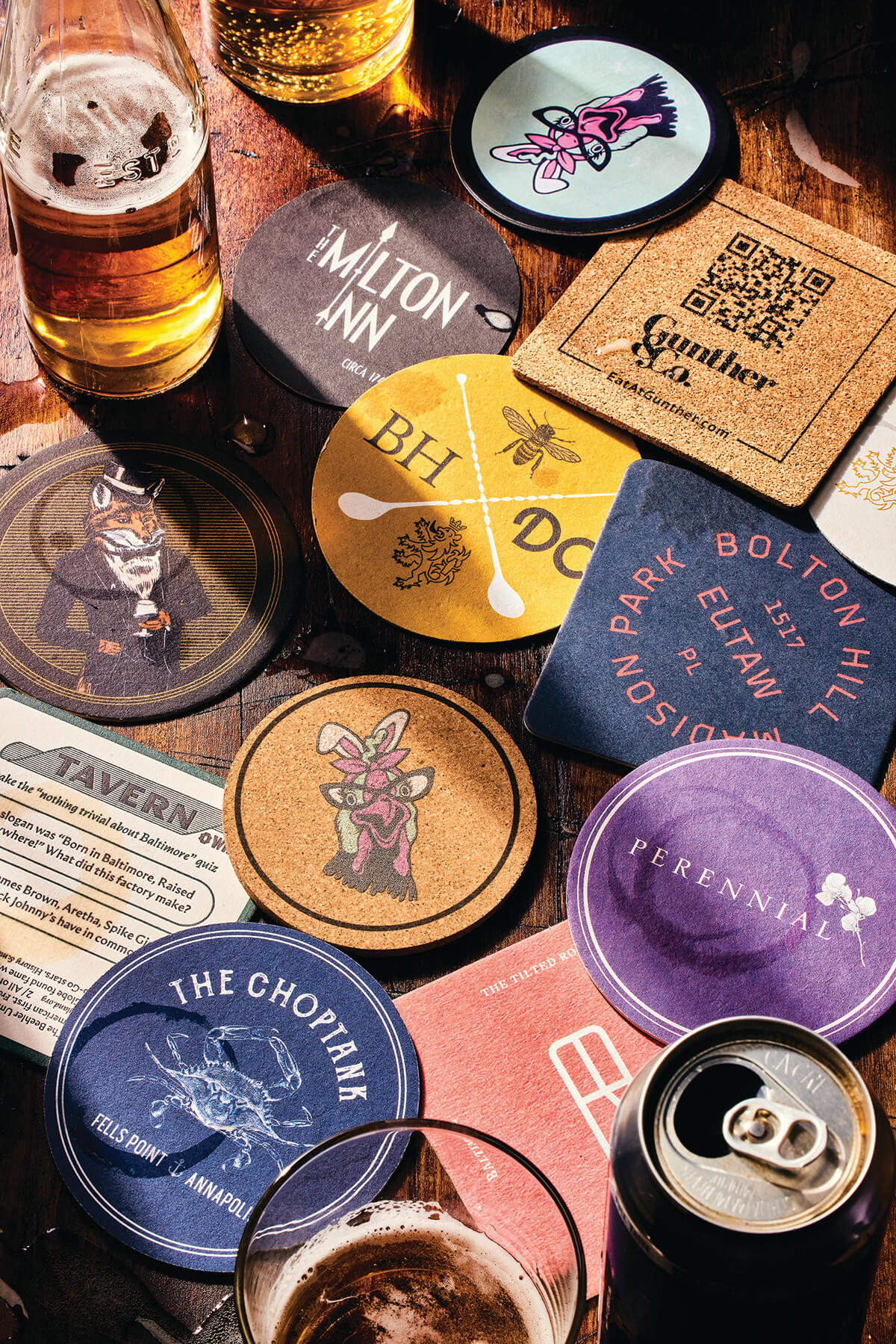Food & Drink
Some of the Coolest Coasters in Baltimore
Baltimore tegestologists—yes, that’s the word for coaster collectors—can find stylish iterations of the cardboard discs all over town.

Those little cardboard discs that go under your cocktail are more than just a way for restaurants and bars to brand themselves—they’re a style statement of sorts.
The earliest coasters, in wide use by the mid-1700s, were designed for wine bottles and decanters and were named for their ability to glide, or coast, across the table. They were commonly made of wood, papier-mâché, or silver. It’s believed that the original, more modern-day coasters (known as beer mats or bierdeckel) were designed by Friedrich Horn, a German printing company, in the 1880s.
Horn’s coasters were flimsy, but several years later, a German entrepreneur named Robert Sputh manufactured and patented his beer mat made of a more absorbent wood pulp to act as a surface saver. The bierdeckels were round or square and often stamped with the printer’s name. Before long, breweries started branding their coasters.
These days, the resurgence of coasters will delight Baltimore tegestologists—yes, that’s the word for coaster collectors. You can find them all around town, from Dutch Courage in Old Goucher to 29th Street Tavern in Remington to Perennial in Towson. (Fun fact: Guinness World Records lists Leo Pisker of Austria as having the largest collection in the world, with 152,860 coasters from 192 countries.)
“There are lots of different types of coasters,” says Brendan Dorr, owner of Dutch Courage. “There’s the cardboard types that act as a little liner for your drink and those ones that look like grandma doilies that you get at a fancy bar.”
While coasters dress up a drink, they also serve a practical purpose.
“Coasters help stop drinks from sweating all over the bar,” says Dorr. “No one wants to put their hand on the bar and get their wrist wet.”